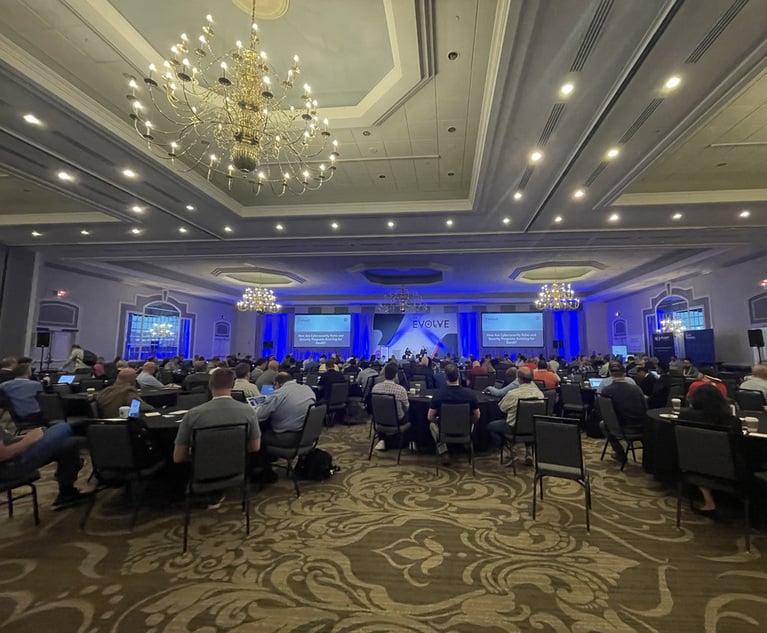Just in time for the 12th anniversary of the Sept. 11terrorist attacks, our friends at the Cato Institute have publishedan interesting new report that calls for letting the TerrorismRisk Insurance Program – the $100 billion federal backstop set upin the wake of the attacks –to expire when it comes up for renewalat the end of 2014.
|That Cato wants TRIP to expire isn't the interesting part. Catoopposed its creation, and opposed both of its extensions, in 2005and 2007. As “minarchist” libertarians, Cato is ideologicallyopposed to nearly any government program one could imagine. At theother end of the spectrum, most of the property/casualty insuranceindustry – primary insurers and reinsurers, agents and brokers, andmany large commercial insureds – is firmly committed to extendingthe existing program in its existing structure.
|Rather, what's interesting from our perspective, is what eachside gets right and wrong about the issue, and parsing thosearguments to find a middle-ground that both better protectstaxpayers while also preserving a functioning market.
|There is much in the Cato paper, authored by law professorRobert Rhee of the University of Maryland, with which we wouldagree. Rhee notes, for instance:
|I have previously written that the commercial insurance andreinsurance markets are sophisticated, well resourced, and wellcapitalized, and that government intrusion into the workings ofthese markets through TRIA was unwarranted. The insurance industryabsorbed the 9/11 losses and recapitalized lost capital, settingthe stage for development of a market for terrorism risk andindustry growth.
|Rhee builds on that with data showing the private marketappetite for terrorism insurance continues to grow. The reality iseven better than Rhee realizes, because he's working withthree-year-old data. He cites Marsh's 2010 terrorism insurance report, which showedincreased capacity for terrorism risks and a big drop in pricingfrom 2008 to 2009, when the median premium rate fell from $37 per$1 million in coverage to $25 per $1 million.
|In fact, in Marsh's 2013 report, the broker finds that, forcompanies with more than $1 billion in total insured value, medianrates are now $19 per $1 million, down from $21 in 2011. Marsh alsonotes that “capacity in the standalone terrorism insurance markethas increased significantly over the years,” with companies nowfinding up to $2 billion of private reinsurance capacity availablefor standalone terrorism risks.
|Indeed, with so much excess capital sloshing around the globalreinsurance markets these days – much of it sourced from hedgefunds, who have been setting up their own reinsurers or backingspecial purpose vehicles for catastrophe risk – reinsurers andlarge commercial property insurers appear more and more to havegotten over any hesitancy they once had about terrorism risks, atleast in the property catastrophe lines. Earlier this month, in areport about a new $250 million terrorism facility set up by globalbroker Aon, The Insurance Insider website noted:
|Competition in the terrorism market has become fierce asyears of favourable claims experience draws more and more capitalinto the space.
|In recent months XL has been making a big play in theterrorism market, hiring a number of heavyweight underwriters fromHiscox and offering $100mn gross lines.
|Stephen Ashwell has been building XL's terrorism book andhas brought on board other Hiscox underwriters including DavidGuest in Singapore and Daniel O'Connell in London.
|And early this year, The Insurance Insider revealed thatMarsh had put together a 25 percent follow-form facility forLondon-led business in the sought-after class.
|But Rhee concludes from these sorts of data points (which doshow genuine progress) that “the insurance market is capable ofproviding terrorism risk coverage without a federal lossbackstop.”
|This is a bold claim. While the $2 billion per-risk capacity isnice, pulling the plug on TRIA would create a $100 billion hole inthe industry's terror-writing capacity. It is possible that privatecapital would be able to fill that hole completely, although itwould certainly come at a significantly higher cost than today. Butasserting that “insurers and private industry can shoulder theirown losses,” as Rhee does, amounts to positing such an unknown andunknowable counter-factual that it would have to be called anarticle of faith, not science.
|Indeed, an argument can be made that the single most importantaspect of the TRIA law is NOT actually the federal reinsurancecapacity that it provides, but its requirement that commercialproperty/casualty insurers must offer terrorism insurance in thefirst place. Marsh interviewed 70 of the largest commercialinsurers back before TRIA's original 2005 extension, and 68 percentof them said they would simply go back to excluding coverage forterrorism, should the program expire.
|Reading his report, I would say part of the problem is that Rheemisapprehends the biggest challenge insurers face in writingterrorism coverage. He looks at the coverage insurers readily makeavailable for other tail risks – such as earthquakes and hurricanes– and concludes:
|Terrorism risk is not more severe than other insurable riskssuch as natural catastrophes, and a federal backstop stakes publicmoney to protect the insurance industry and subsidize the terrorismrisk insurance premiums for commercial policyholders.
|But the issue isn't severity alone. Property insurers actuallyhave a pretty good handle on the maximum severity they might face –it's called the policy limits. No matter how big or catastrophic anevent, and no matter the cause, an insurer will not have to pay outmore than it insures. (This gets a bit more complicated in thecasualty lines, and particularly workers' compensation, whereclaims can be much more open-ended and persist literally fordecades.)
|What makes terrorism different than hurricanes is that terroristacts are committed by human beings, and human behavior doesn'tsubmit easily to modeling. That means, first, that the frequency ofterrorist events are much tougher to anticipate ex-ante. But italso means that terrorism doesn't lend itself to effective riskmitigation in anything like the same way as other risks. If you putup storm shutters, a hurricane doesn't plot to find other ways tohurt you.
|Rhee does address some of these issues. And he correctly notesthat most terrorist events are of relatively modest severity, withan impact that is more psychological than economic. That'sabsolutely true. If the question is, would an insurer – or theentire insurance industry – be able to pay claims arising fromterrorism, then an overwhelming portion of the time, the answerwould be yes.
|But what about when the answer is no? As Nassim Talebwould put it, terrorism is a “fat-tailed” event. A singleloss event can be big enough to more than wipe out all the gainsever made to date. It's been estimated that in Manhattan, a10-kiloton bomb, smaller than the one dropped on Hiroshima, wouldkill half a million people and cause $1 trillion in economic damages. That'smore than the capacity of the entire global insuranceindustry.
|This is particularly problematic for workers' compensationinsurers. Commercial property insurers not only get to set firmpolicy limits, they also can and do exclude coverage for so-calledNBCR (that is, nuclear, biological, chemical and radiological)attacks. Workers' comp insurers can't do either. They must pay allvalid claims, regardless of causation, on a no-fault basis. Thatforces them to find ways to price the unpriceable, while alsocontending with state regulators who tend to want to exercise theirauthority to impose price controls. The workers' comp market hasstruggled with these exposures, even with the federal backstop, andthere is a genuine risk that it could move into crisis – imperilingthe already fragile jobs recovery – if that support were to betaken away.
|In comments we submitted last year to the FederalInsurance Office, we proposed a three-part test for evaluatingwhether governments should ever be directly involved in providingreinsurance capacity. These were what we saw as the essentialelements of the positive case for such an intervention:
- There is a strong and long-lived historical precedent that thegovernment uses tax money to pay for the expense to bereinsured.
- The expense to be reinsured will not be covered by the privatesector by ordinary means.
- The best available underwriting data is largely or entirely inthe hands of the public sector and cannot feasibly bereleased.
We asserted that anywhere all three conditions did not apply –such as in the “national catastrophe fund” proposals that getfloated in Congress from time to time – the governmentabsolutely should not be involved. And even if all three conditionsare met, that doesn't necessarily make it a good idea for thegovernment to be involved.
|For us, the terrorism backstop meets all three conditions, butwe still would like to see movement toward more private marketcapacity. In the near future, there are some obvious ways to dothis. We would recommend raising the trigger level for federalcoverage from the current $100 million to at least $1 billion, andideally to $5 billion or $10 billion. There is just no plausiblecase that the private market would have trouble covering a $100million event absent government assistance.
|We also would propose raising the program's deductibles from thecurrent 20 percent of an insurer's direct earned premium. Thegrowth in private standalone capacity can easily fill in gaps here,and a failure to raise the deductible may actually be crowding outcapacity that would otherwise come on-line.
|And we think the industry should be paying a premium forcoverage, just as it did for the Riot Reinsurance Program that wasset up in the late 1960s in response to mass urban riots. With thatearlier experience in federal reinsurance, the private market tookover more or less organically. The string of riots died down,reinsurance prices fell and eventually, private coverage becamecheaper than the government alternative. If premiums wererisk-based, then that also would have the benefit of using pricesignals to communicate information to the market.
|In the end, we agree with Cato that a world without any federalinsurance or reinsurance program is the world we want to live in.We disagree that simply allowing the program to sunset, without anyregard to whether private capacity would be sufficient to plug thehole, is an effective public policy strategy. The danger isthat, due to a combination of exclusions and prohibitive pricing, asignificant portion of terrorism risk would simply gouninsured.
|We take it for granted that, in the wake of any significantterrorist attack, the government will respond, including withbuckets of money. Our goal is to try to find that structure thatmaximizes private sector coverage, if only to make the governmentresponse that would otherwise be used to compensate uninsured risksas small as possible.
Want to continue reading?
Become a Free PropertyCasualty360 Digital Reader
Your access to unlimited PropertyCasualty360 content isn’t changing.
Once you are an ALM digital member, you’ll receive:
- All PropertyCasualty360.com news coverage, best practices, and in-depth analysis.
- Educational webcasts, resources from industry leaders, and informative newsletters.
- Other award-winning websites including BenefitsPRO.com and ThinkAdvisor.com.
Already have an account? Sign In
© 2024 ALM Global, LLC, All Rights Reserved. Request academic re-use from www.copyright.com. All other uses, submit a request to [email protected]. For more information visit Asset & Logo Licensing.








